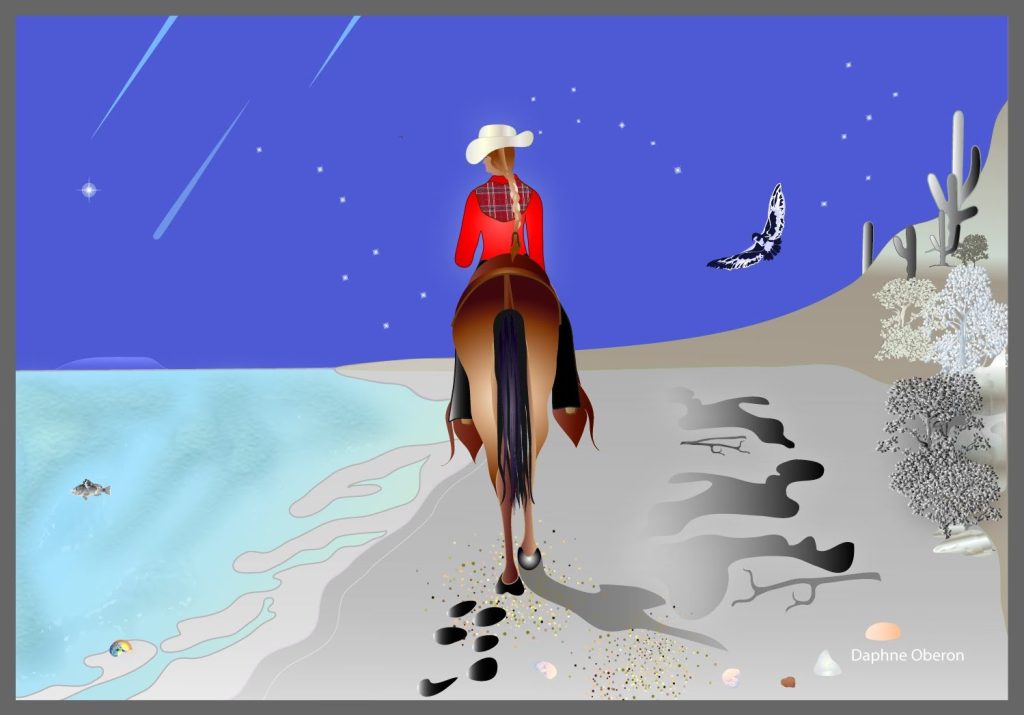Part 1 ended with Daphne’s recollection of the aftermath of the earthquake… “The next morning, we launched on a tide flowing out of the Gulf toward the Cape. As it carried us back to Delicias, we drifted farther away from land. I screamed at Dana to pull harder, but the current’s grip on us overcame our efforts to paddle to shore, and it began to take us into the dreaded Cerralvo Channel and out to sea.”
Part 2
“I was ready to abandon our life-saving water cargo and swim for the beach, but after praying for help, another current pulled us back, and we beached the boat. Once we arrived, only force-feeding our prostrate burros and horses with a mixture of water, cornmeal, and panocha, a coarse-grain sugar, revived them.”
Daphne’s father took her off Cerralvo when his three-year lease expired. After a failed camp at San Juan de la Costa just north of La Paz, the family returned to California. But her father’s cruelty was not over.
Daphne is living in England, working on a book about her experiences living on Cerralvo and later in the jungles of Guatemala. Ventana View readers will be the first to know when she publishes the rest of her story.

Author’s note: In 2010, I mentioned to a Mexican friend my interest in learning about the history of Isla Cerralvo. He told me his uncle remembered that a young “gringa” and her horses had lived on the island in the late 1960s. A Google search revealed a newly published Baja novel whose author, Daphne Oberon, had lived on the island. We made contact, and I connected her with Esteban Lucero. I found an alumnus Peter Ashlock of Dr. Oberon’s San Bartolo school and put him in touch with Daphne. To make a long story short, Peter and Daphne got married, and I had the honor of giving her away at their wedding.
Daphne is currently working on her memoir, including how, as a young adult, she feared for her life at her father’s new 1970s school camp in Guatemala. After her father took away her American passport and had her naturalized as a Guatemalan citizen, Daphne escaped through the jungle and stowed away on a flight to California. She arrived in Los Angeles as an apparent illegal immigrant, and US Immigration tried to deport her back to Guatemala. After standing behind chains with deportees for 24 hours, she finally persuaded an off-duty immigration officer to look up her birth record in Sacramento. Due to his intervention, she was eventually released back into the US with no identification. Finally, she was recognized as a legal citizen and embarked on a sporadic career in nursing and exotic pets. She specialized as a trainer, farm manager, breeding manager, and exercise rider in the race and show-horse business.